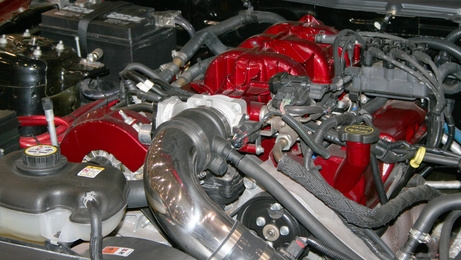
The purpose of antifreeze in a car's radiator is twofold. It runs through a car's cooling system, preventing the engine from overheating. In cold weather, it prevents the fluid in the radiator from freezing. Antifreeze should be checked and changed regularly.
Antifreeze--coolant--is used in a 50/50 mixture with mineral, distilled or tap water to keep the engine at an optimal temperature. It also prevents the radiator from rusting and keeps too much water from evaporating, since antifreeze does not evaporate.
To work properly, there must be enough antifreeze in a car's radiator. Be sure the engine is completely cool before you check or change the antifreeze, as you could be burned by hot fluids or steam. The coolant reservoir, usually a plastic tank with hoses connected to the radiator, should have marks on it that tell you if the level is acceptable. If your engine does not have this tank, remove the radiator cap. If you can see fluid, there is enough.
Antifreeze should be changed at least every two or three years. Drain and flush the cooling system, then pour new antifreeze/water mix into the radiator until the proper level is reached. Antifreeze is toxic and should be disposed of carefully. The packaging should tell you how to do this.